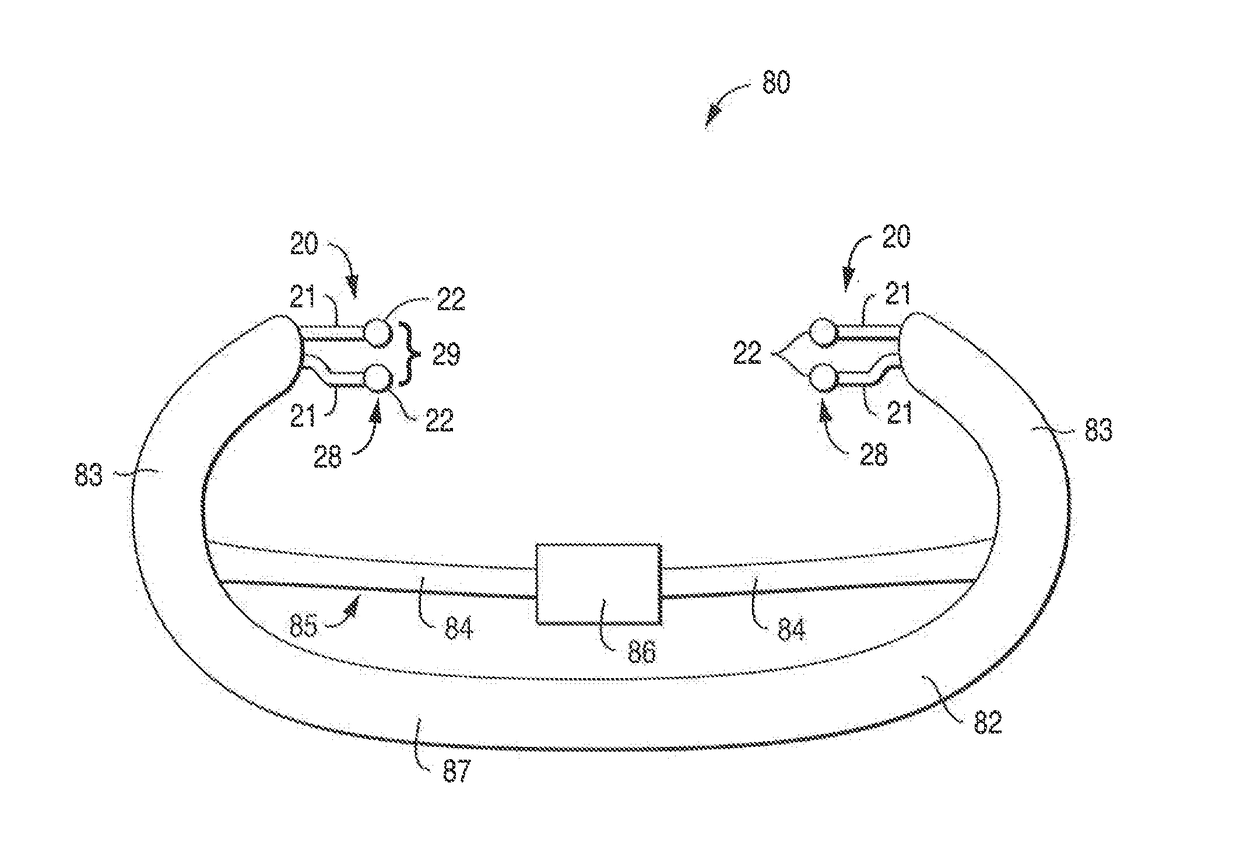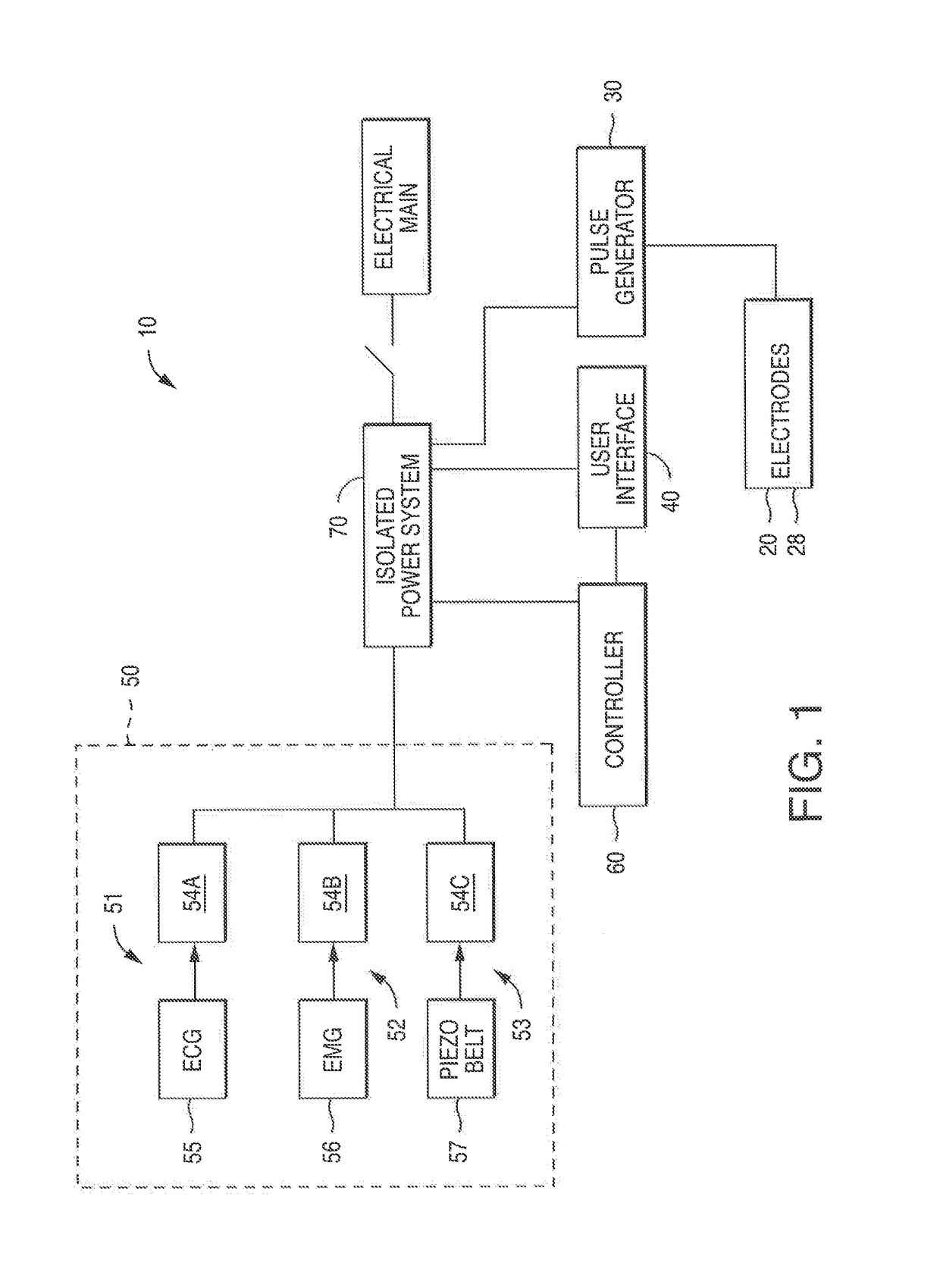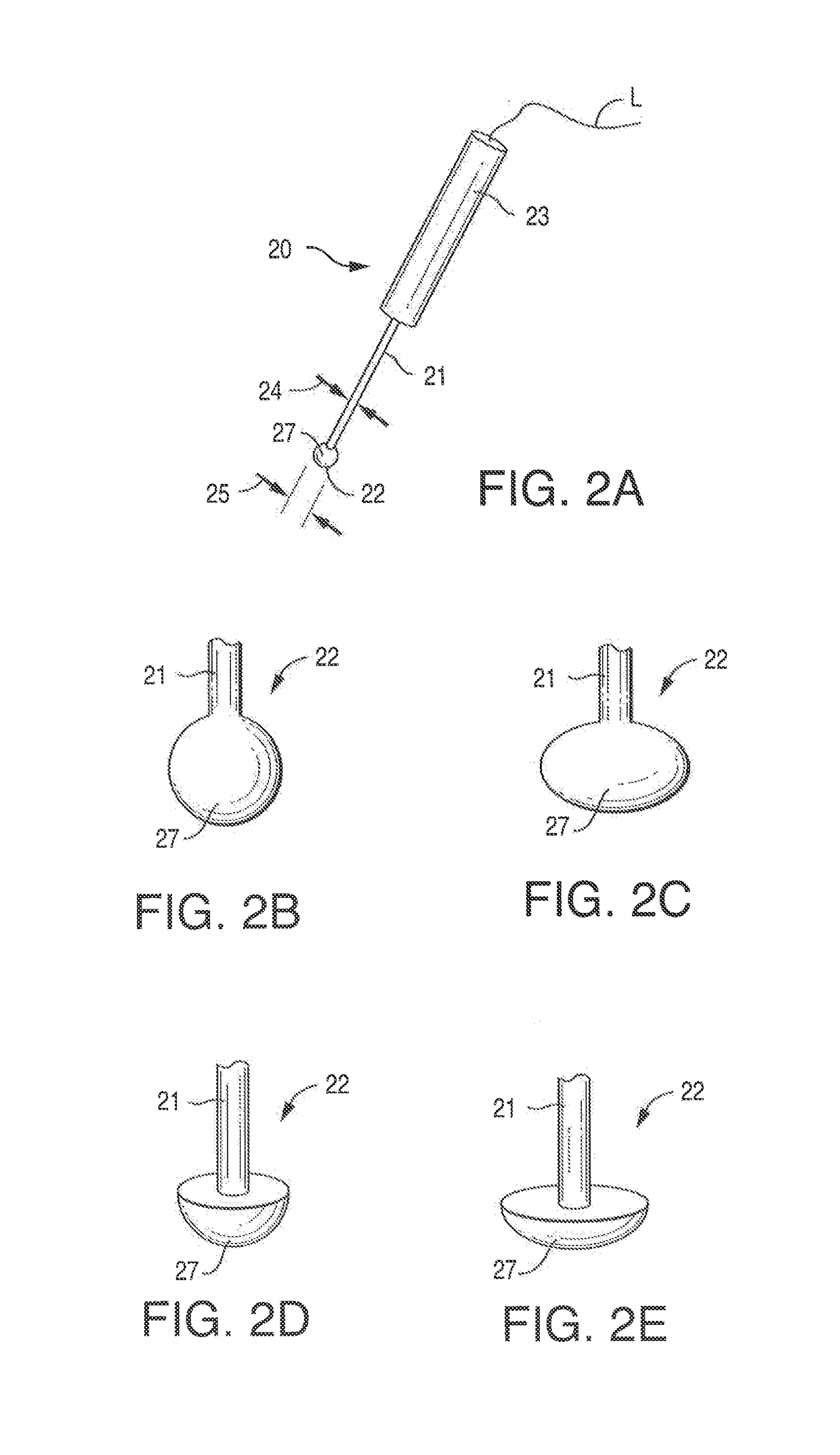Non-Invasive Nerve Stimulation System and Method
a nerve stimulation and non-invasive technology, applied in the field of non-invasive nerve stimulation, can solve the problems of long-term respiratory support, increased discomfort level, increased risk of secondary disease, etc., and achieve the effect of restoring diaphragm muscle health and preventing atrophy
- Summary
- Abstract
- Description
- Claims
- Application Information
AI Technical Summary
Benefits of technology
Problems solved by technology
Method used
Image
Examples
Embodiment Construction
[0057]Reference now will be made in detail to various embodiments of the disclosure, one or more examples of which are set forth below. Each example is provided by way of explanation, not limitation of the disclosure. In fact, it will be apparent to those skilled in the art that various modifications and variations may be made in the present disclosure without departing from the scope or spirit of the invention. For instance, features illustrated or described as part of one embodiment, may be used on another embodiment to yield a still further embodiment. Thus, it is intended that the present invention cover such modifications and variations.
[0058]Disclosed is a system for delivering electrical nerve stimulation through the intact skin to stimulate an underlying target nerve. Generally speaking, the intact skin is intact mammalian skin. According to the invention, the electrical stimulation is delivered transcutaneously without use of an instrument or electrode that physically penet...
PUM
 Login to View More
Login to View More Abstract
Description
Claims
Application Information
 Login to View More
Login to View More - R&D
- Intellectual Property
- Life Sciences
- Materials
- Tech Scout
- Unparalleled Data Quality
- Higher Quality Content
- 60% Fewer Hallucinations
Browse by: Latest US Patents, China's latest patents, Technical Efficacy Thesaurus, Application Domain, Technology Topic, Popular Technical Reports.
© 2025 PatSnap. All rights reserved.Legal|Privacy policy|Modern Slavery Act Transparency Statement|Sitemap|About US| Contact US: help@patsnap.com



